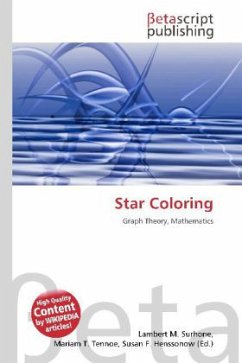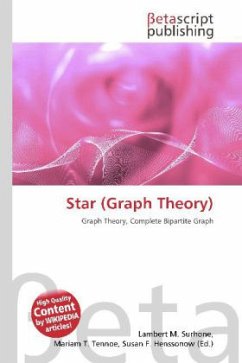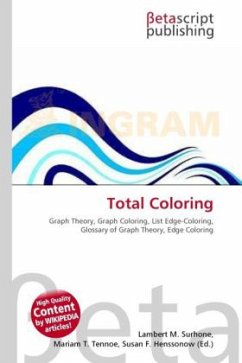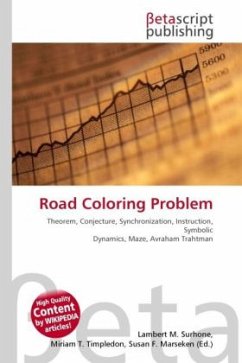
Star Coloring
Versandkostenfrei!
Versandfertig in 6-10 Tagen
23,99 €
inkl. MwSt.

PAYBACK Punkte
12 °P sammeln!
Please note that the content of this book primarily consists of articles available from Wikipedia or other free sources online. n graph-theoretic mathematics, a star coloring of a graph G is a (proper) vertex coloring in which every path on four vertices uses at least three distinct colors. Equivalently, in a star coloring, the induced subgraphs formed by the vertices of any two colors has connected components that are star graphs. The star chromatic number s(G) of G is the least number of colors needed to star color G. One generalization of star coloring is the closely-related concept of acyc...
Please note that the content of this book primarily consists of articles available from Wikipedia or other free sources online. n graph-theoretic mathematics, a star coloring of a graph G is a (proper) vertex coloring in which every path on four vertices uses at least three distinct colors. Equivalently, in a star coloring, the induced subgraphs formed by the vertices of any two colors has connected components that are star graphs. The star chromatic number s(G) of G is the least number of colors needed to star color G. One generalization of star coloring is the closely-related concept of acyclic coloring, where it is required that every cycle uses at least three colors, so the two-color induced subgraphs are forests. If we denote the acyclic chromatic number of a graph G by a(G), we have that chi_a(G) leq chi_s(G), and in fact every star coloring of G is an acyclic coloring.












